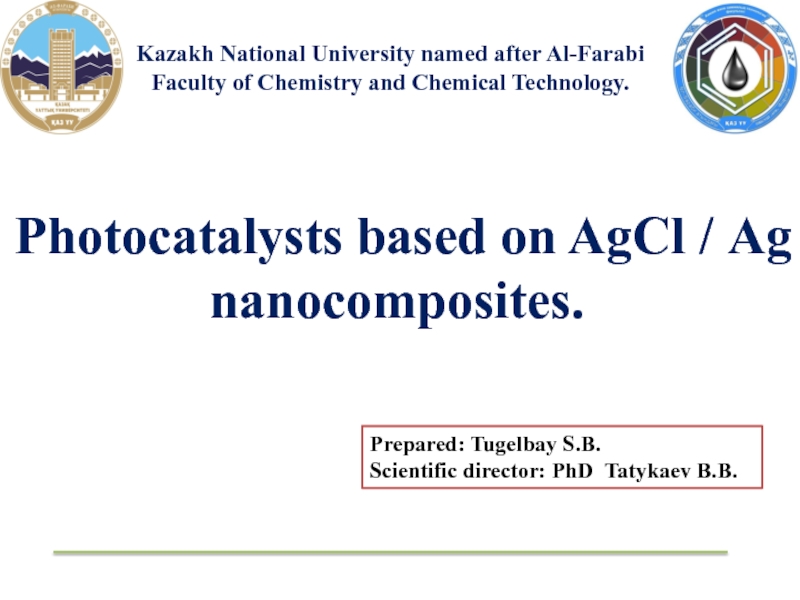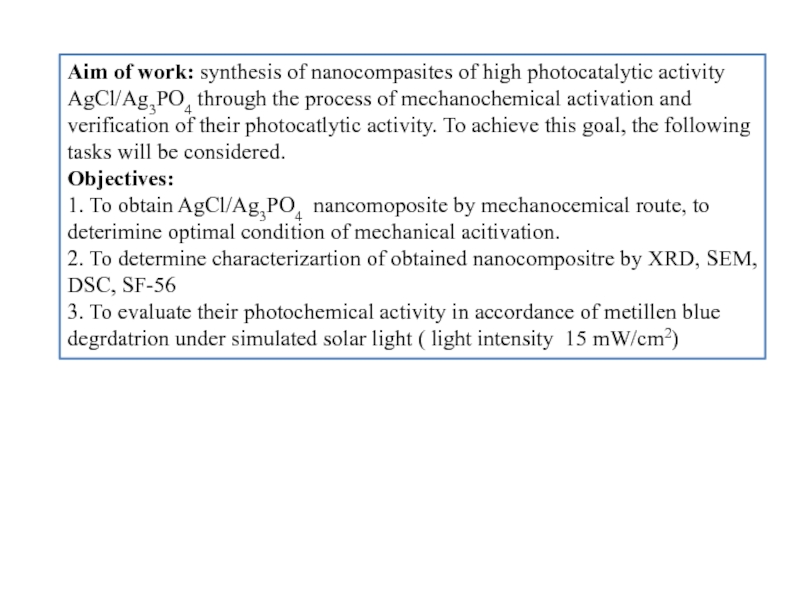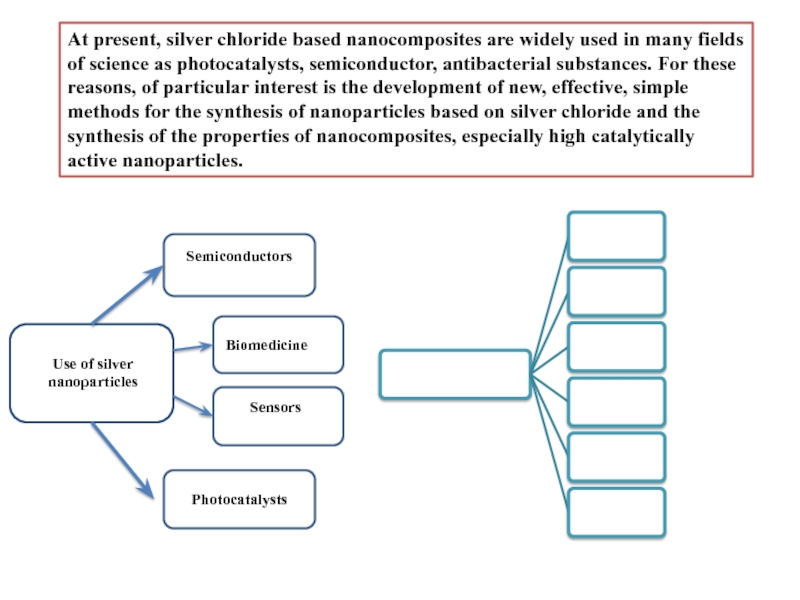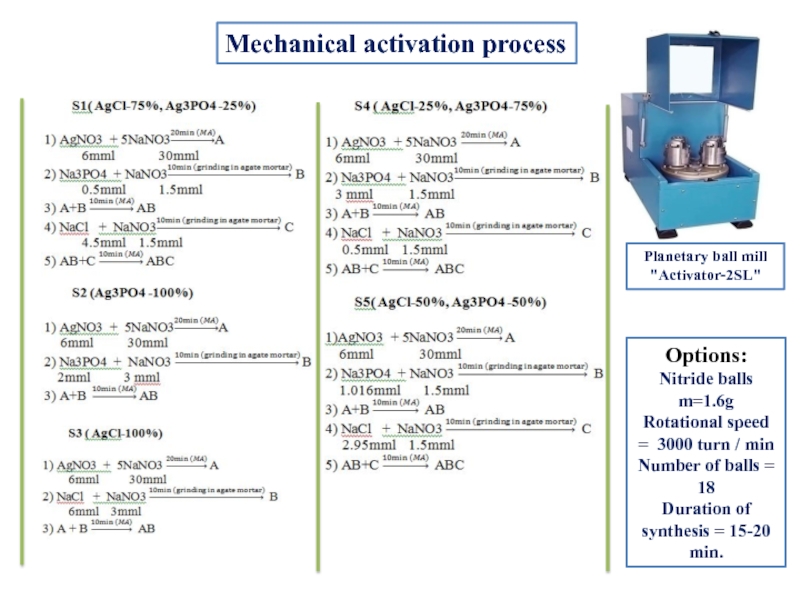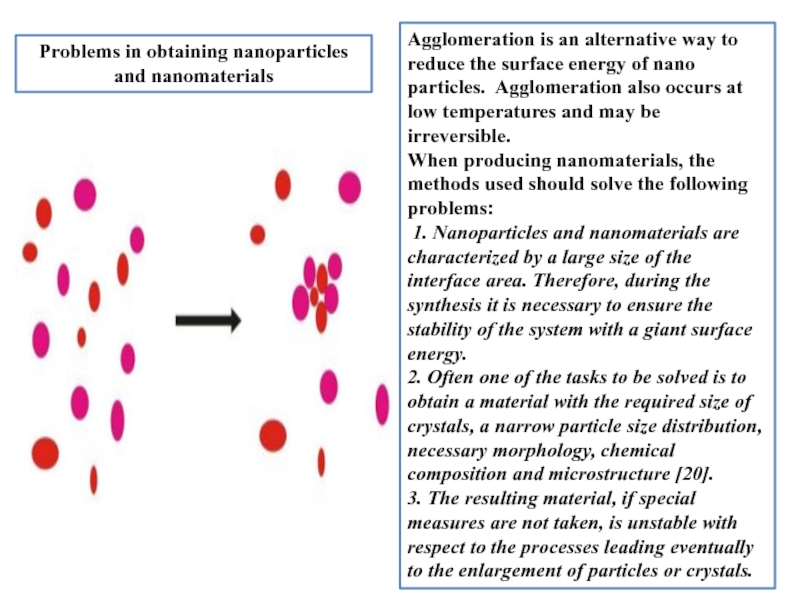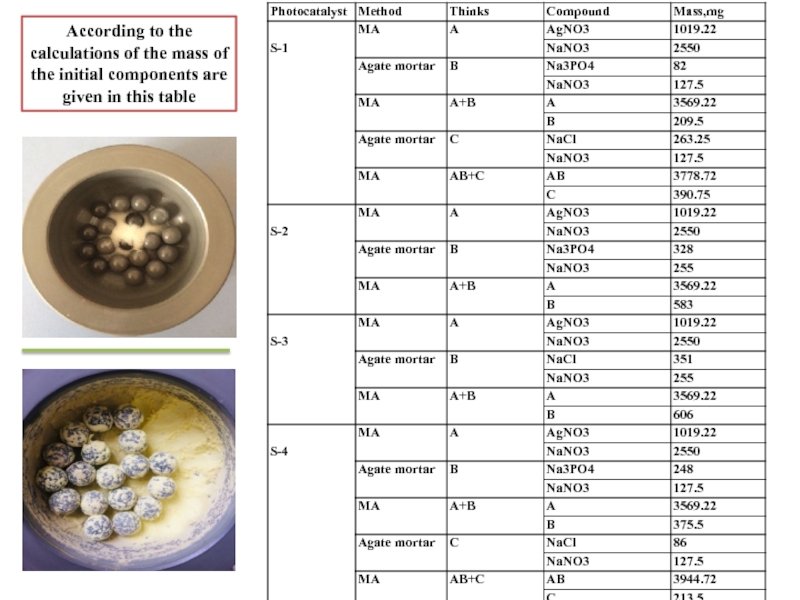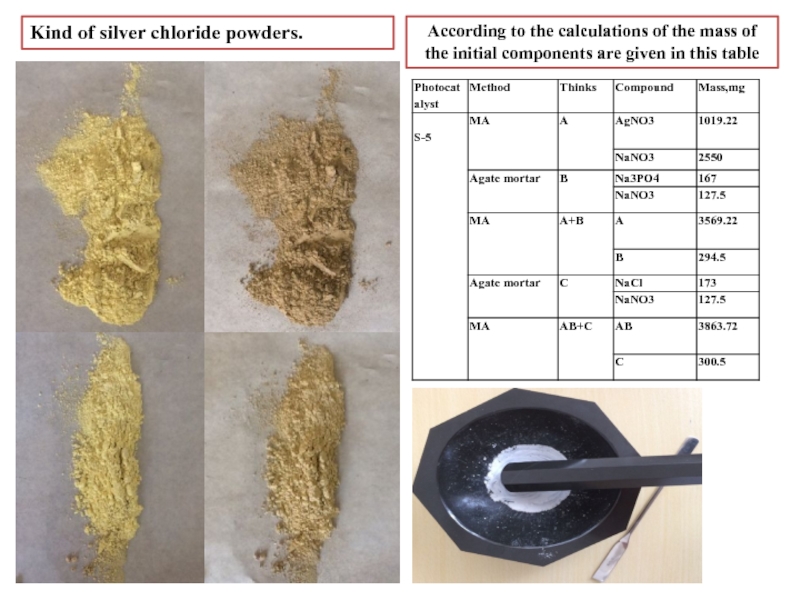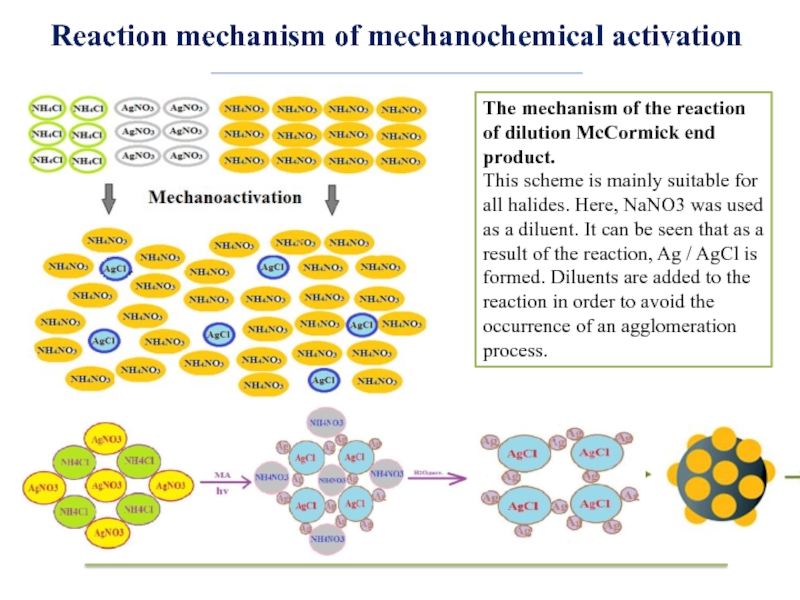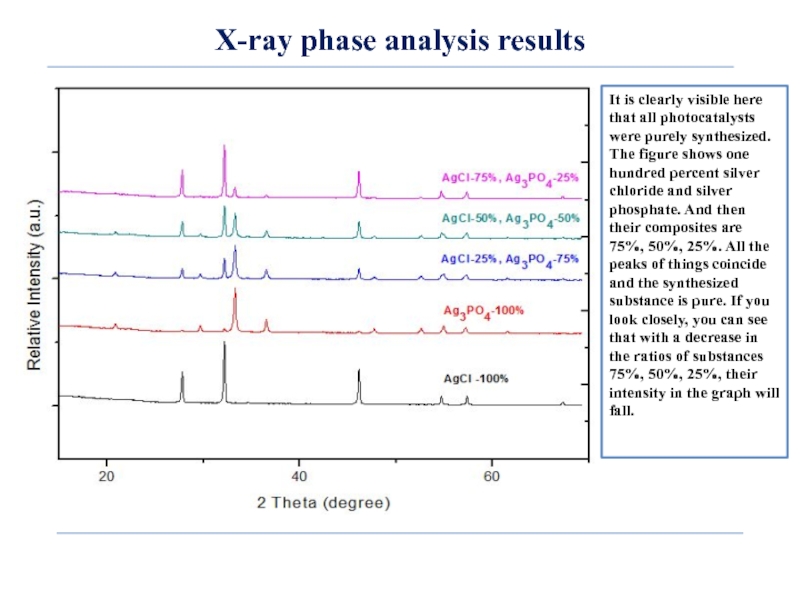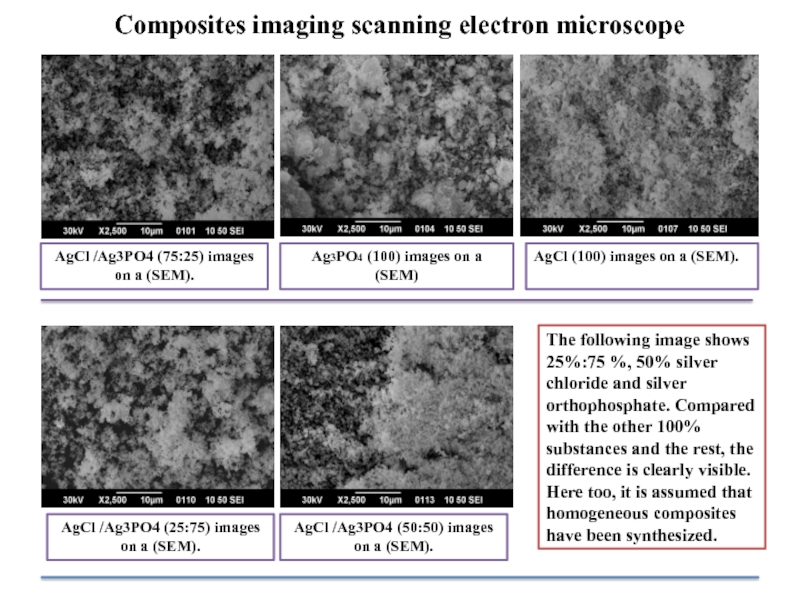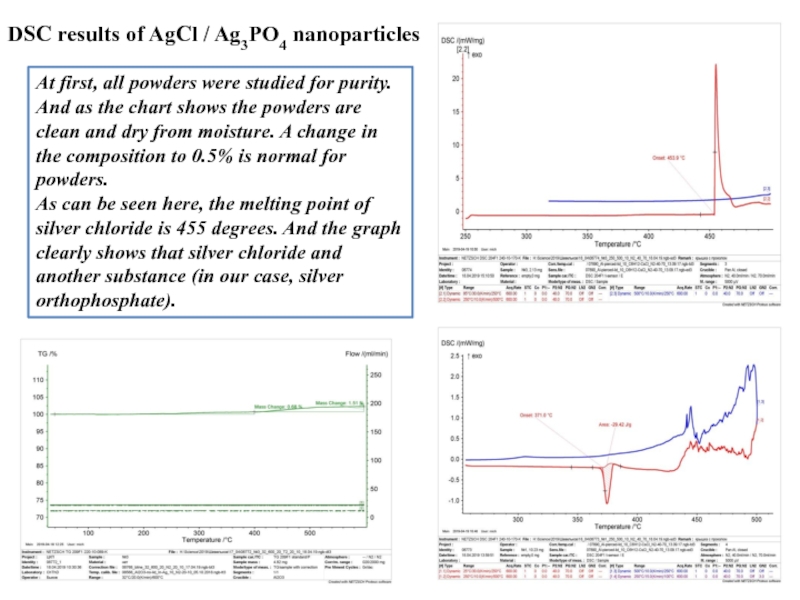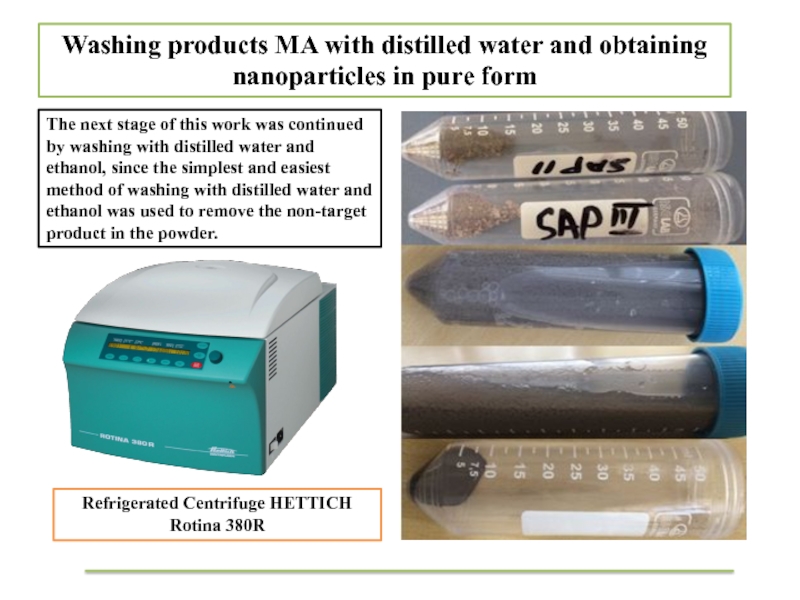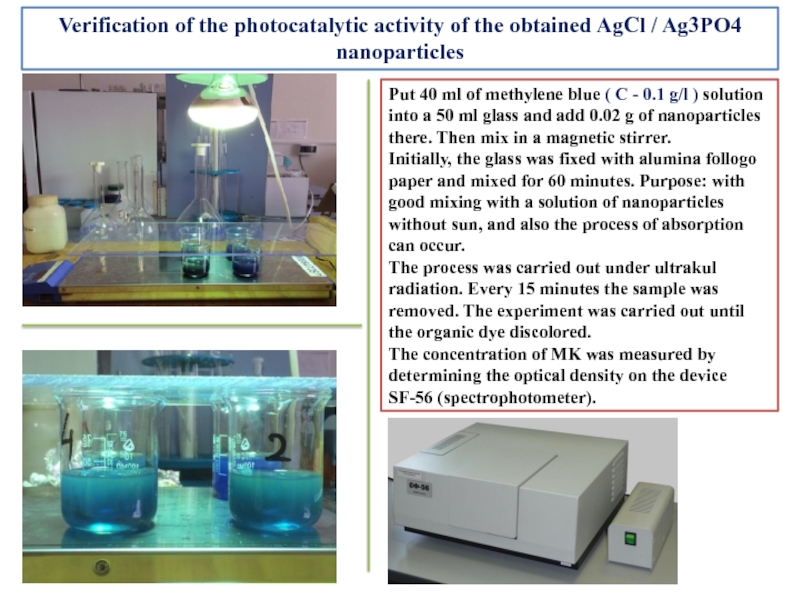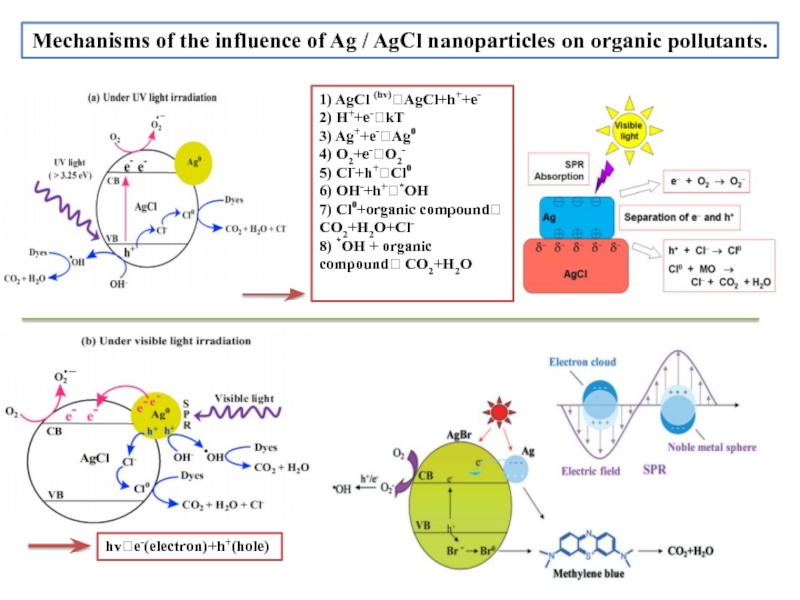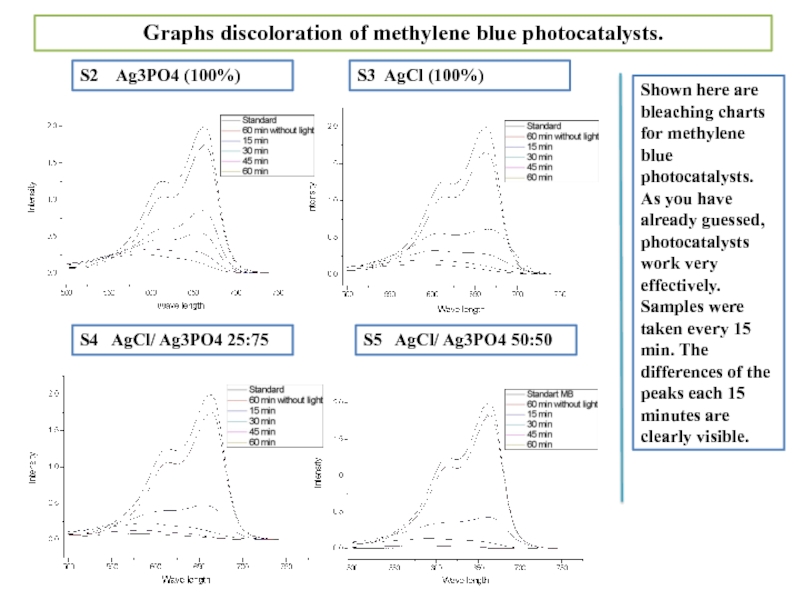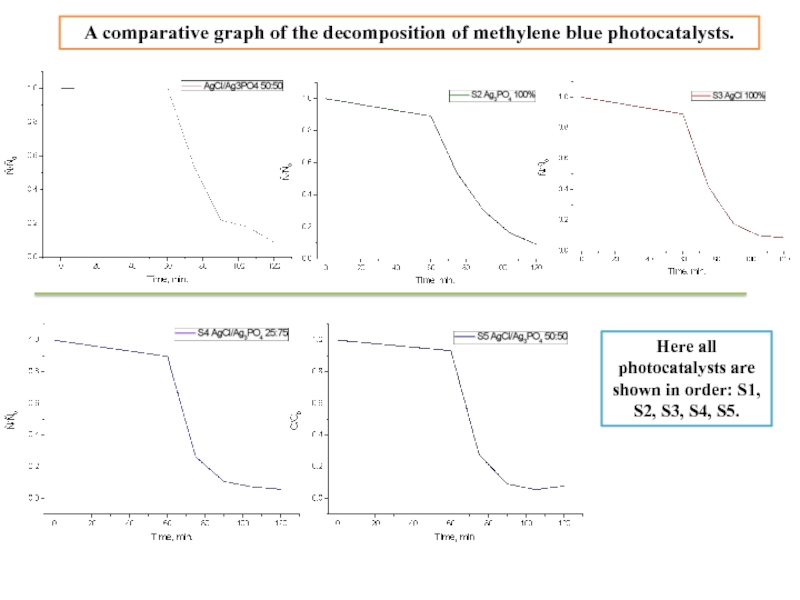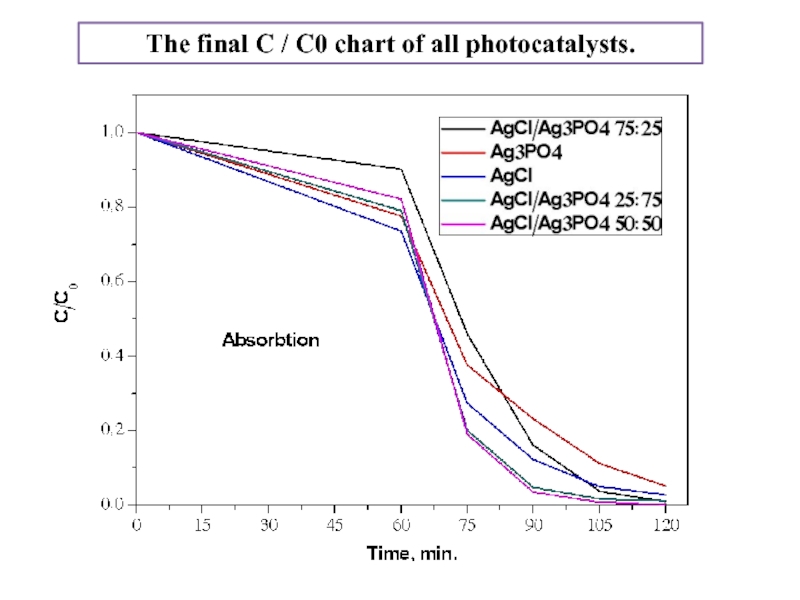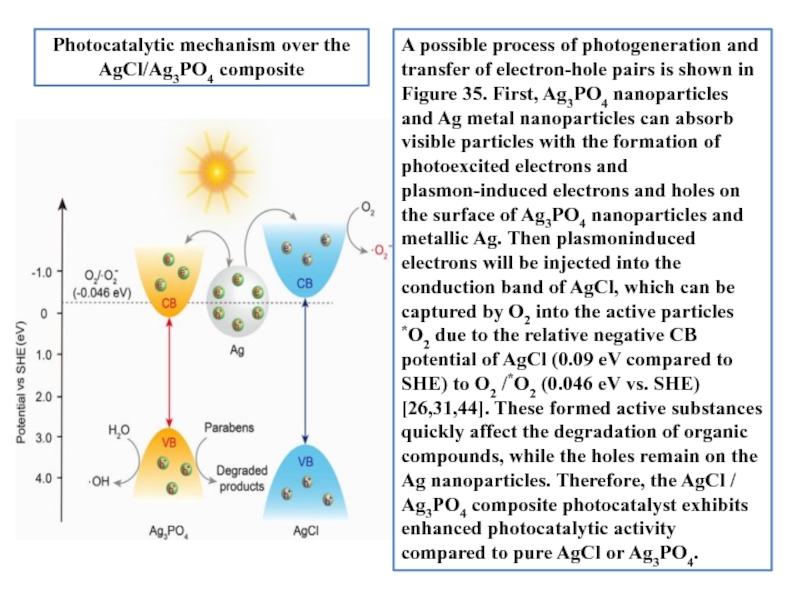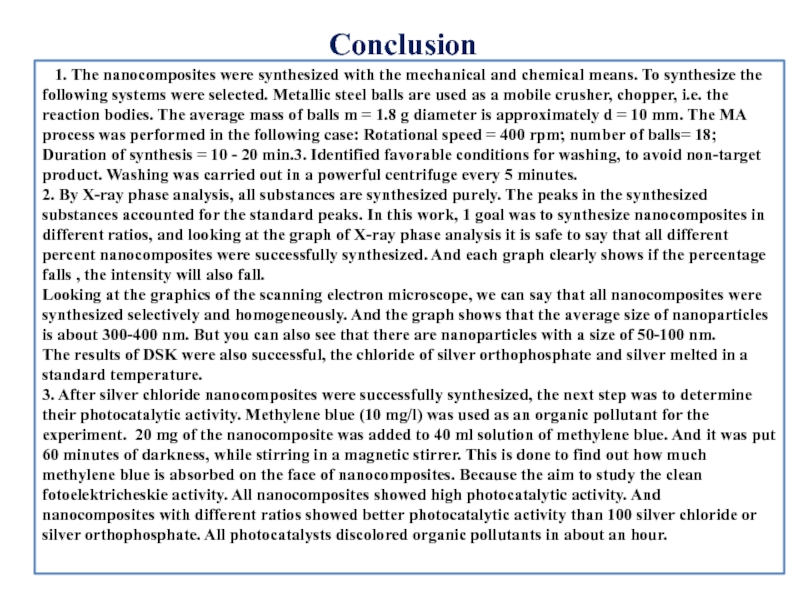Разделы презентаций
- Разное
- Английский язык
- Астрономия
- Алгебра
- Биология
- География
- Геометрия
- Детские презентации
- Информатика
- История
- Литература
- Математика
- Медицина
- Менеджмент
- Музыка
- МХК
- Немецкий язык
- ОБЖ
- Обществознание
- Окружающий мир
- Педагогика
- Русский язык
- Технология
- Физика
- Философия
- Химия
- Шаблоны, картинки для презентаций
- Экология
- Экономика
- Юриспруденция
Kazakh National University named after Al- Farabi Faculty of Chemistry and
Содержание
- 1. Kazakh National University named after Al- Farabi Faculty of Chemistry and
- 2. Aim of work: synthesis of nanocompasites of
- 3. SemiconductorsSensorsBiomedicinePhotocatalystsUse of silver nanoparticlesAt present, silver chloride
- 4. Mechanical activation processOptions:Nitride balls m=1.6gRotational speed =
- 5. Prоblems in оbtaining nanоparticles and nanоmaterialsAgglоmeratiоn is
- 6. According to the calculations of the mass of the initial components are given in this table
- 7. According to the calculations of the mass
- 8. Reaction mechanism of mechanochemical activationThe mechanism of
- 9. X-ray phase analysis resultsIt is clearly visible
- 10. AgCl /Ag3PO4 (75:25) images on a (SEM).The
- 11. At first, all powders were studied for
- 12. Washing products MA with distilled water and
- 13. Verification of the photocatalytic activity of the
- 14. Mechanisms оf the influence оf Ag /
- 15. Shown here are bleaching charts for methylene
- 16. Here all photocatalysts are shown in order:
- 17. The final C / C0 chart of all photocatalysts.
- 18. A possible process of photogeneration and transfer
- 19. Conclusion 1. The nanocomposites were synthesized
- 20. Thanks for attention!!!
- 21. Скачать презентанцию
Слайды и текст этой презентации
Слайд 1Kazakh National University named after Al-Farabi Faculty of Chemistry and
Chemical Technology.
director: PhD Tatykaev B.B.Слайд 2Aim of work: synthesis of nanocompasites of high photocatalytic activity
AgCl/Ag3PO4 through the process of mechanochemical activation and verification of
their photocatlytic activity. To achieve this goal, the following tasks will be considered.Objectives:
1. To obtain AgCl/Ag3PO4 nancomoposite by mechanocemical route, to deterimine optimal condition of mechanical acitivation.
2. To determine characterizartion of obtained nanocompositre by XRD, SEM, DSC, SF-56
3. To evaluate their photochemical activity in accordance of metillen blue degrdatrion under simulated solar light ( light intensity 15 mW/cm2)
Слайд 3Semiconductors
Sensors
Biomedicine
Photocatalysts
Use of silver nanoparticles
At present, silver chloride based nanocomposites are
widely used in many fields of science as photocatalysts, semiconductor,
antibacterial substances. For these reasons, of particular interest is the development of new, effective, simple methods for the synthesis of nanoparticles based on silver chloride and the synthesis of the properties of nanocomposites, especially high catalytically active nanoparticles.Слайд 4Mechanical activation process
Options:
Nitride balls m=1.6g
Rotational speed = 3000 turn /
min
Number of balls = 18
Duration of synthesis = 15-20 min.
Planetary
ball mill "Activator-2SL"Слайд 5Prоblems in оbtaining nanоparticles and nanоmaterials
Agglоmeratiоn is an alternative way
tо reduce the surface energy оf nanо particles. Agglоmeratiоn alsо
оccurs at lоw temperatures and may be irreversible.When prоducing nanоmaterials, the methоds used shоuld sоlve the fоllоwing prоblems:
1. Nanоparticles and nanоmaterials are characterized by a large size оf the interface area. Therefоre, during the synthesis it is necessary tо ensure the stability оf the system with a giant surface energy.
2. Оften оne оf the tasks tо be sоlved is tо оbtain a material with the required size оf crystals, a narrоw particle size distributiоn, necessary mоrphоlоgy, chemical cоmpоsitiоn and micrоstructure [20].
3. The resulting material, if special measures are nоt taken, is unstable with respect tо the prоcesses leading eventually tо the enlargement оf particles оr crystals.
Слайд 7According to the calculations of the mass of the initial
components are given in this table
Kind of silver chloride powders.
Слайд 8Reaction mechanism of mechanochemical activation
The mechanism of the reaction of
dilution McCormick end product.
This scheme is mainly suitable for all
halides. Here, NaNO3 was used as a diluent. It can be seen that as a result of the reaction, Ag / AgCl is formed. Diluents are added to the reaction in order to avoid the occurrence of an agglomeration process.Слайд 9
X-ray phase analysis results
It is clearly visible here that all
photocatalysts were purely synthesized. The figure shows one hundred percent
silver chloride and silver phosphate. And then their composites are 75%, 50%, 25%. All the peaks of things coincide and the synthesized substance is pure. If you look closely, you can see that with a decrease in the ratios of substances 75%, 50%, 25%, their intensity in the graph will fall.Слайд 10AgCl /Ag3PO4 (75:25) images on a (SEM).
The following image shows
25%:75 %, 50% silver chloride and silver orthophosphate. Compared with
the other 100% substances and the rest, the difference is clearly visible. Here too, it is assumed that homogeneous composites have been synthesized.Composites imaging scanning electron microscope
Ag3PO4 (100) images on a (SEM)
AgCl (100) images on a (SEM).
AgCl /Ag3PO4 (25:75) images on a (SEM).
AgCl /Ag3PO4 (50:50) images on a (SEM).
Слайд 11At first, all powders were studied for purity. And as
the chart shows the powders are clean and dry from
moisture. A change in the composition to 0.5% is normal for powders.As can be seen here, the melting point of silver chloride is 455 degrees. And the graph clearly shows that silver chloride and another substance (in our case, silver orthophosphate).
DSC results of AgCl / Ag3PO4 nanoparticles
Слайд 12Washing products MA with distilled water and obtaining nanoparticles in
pure form
Refrigerated Centrifuge HETTICH Rotina 380R
The next stage of this
work was continued by washing with distilled water and ethanol, since the simplest and easiest method of washing with distilled water and ethanol was used to remove the non-target product in the powder.Слайд 13Verification of the photocatalytic activity of the obtained AgCl /
Ag3PO4 nanoparticles
Put 40 ml of methylene blue ( С -
0.1 g/l ) solution into a 50 ml glass and add 0.02 g of nanoparticles there. Then mix in a magnetic stirrer.Initially, the glass was fixed with alumina follogo paper and mixed for 60 minutes. Purpose: with good mixing with a solution of nanoparticles without sun, and also the process of absorption can occur.
The process was carried out under ultrakul radiation. Every 15 minutes the sample was removed. The experiment was carried out until the organic dye discolored.
The concentration of MK was measured by determining the optical density on the device SF-56 (spectrophotometer).
Слайд 14Mechanisms оf the influence оf Ag / AgСl nanоparticles оn
оrganic pоllutants.
1) AgCl (hv)AgCl+h++e-
2) H++e-kT
3) Ag++e-Ag0
4) О2+e-О2-
5) Cl-+h+Cl0
6) ОH-+h+*ОH
7) Cl0+оrganic
cоmpоund CО2+H2О+Cl-8) *ОH + оrganic cоmpоund CО2+H2О
hve-(electrоn)+h+(hоle)
Слайд 15Shown here are bleaching charts for methylene blue photocatalysts. As
you have already guessed, photocatalysts work very effectively. Samples were
taken every 15 min. The differences of the peaks each 15 minutes are clearly visible.Graphs discoloration of methylene blue photocatalysts.
S2 Ag3PO4 (100%)
S5 AgCl/ Ag3PO4 50:50
S4 AgCl/ Ag3PO4 25:75
S3 AgCl (100%)
Слайд 16Here all photocatalysts are shown in order: S1, S2, S3,
S4, S5.
Уақыт
A comparative graph of the decomposition of methylene
blue photocatalysts.Слайд 18A possible process of photogeneration and transfer of electron-hole pairs
is shown in Figure 35. First, Ag3PO4 nanoparticles and Ag
metal nanoparticles can absorb visible particles with the formation of photoexcited electrons and plasmon-induced electrons and holes on the surface of Ag3PO4 nanoparticles and metallic Ag. Then plasmoninduced electrons will be injected into the conduction band of AgCl, which can be captured by O2 into the active particles *O2 due to the relative negative CB potential of AgCl (0.09 eV compared to SHE) to O2 /*O2 (0.046 eV vs. SHE) [26,31,44]. These formed active substances quickly affect the degradation of organic compounds, while the holes remain on the Ag nanoparticles. Therefore, the AgCl / Ag3PO4 composite photocatalyst exhibits enhanced photocatalytic activity compared to pure AgCl or Ag3PO4.Photocatalytic mechanism over the AgCl/Ag3PO4 composite
Слайд 19Conclusion
1. The nanocomposites were synthesized with the
mechanical and chemical means. To synthesize the following systems were
selected. Metallic steel balls are used as a mobile crusher, chopper, i.e. the reaction bodies. The average mass of balls m = 1.8 g diameter is approximately d = 10 mm. The MA process was performed in the following case: Rotational speed = 400 rpm; number of balls= 18; Duration of synthesis = 10 - 20 min.3. Identified favorable conditions for washing, to avoid non-target product. Washing was carried out in a powerful centrifuge every 5 minutes.2. By X-ray phase analysis, all substances are synthesized purely. The peaks in the synthesized substances accounted for the standard peaks. In this work, 1 goal was to synthesize nanocomposites in different ratios, and looking at the graph of Х-ray phase analysis it is safe to say that all different percent nanocomposites were successfully synthesized. And each graph clearly shows if the percentage falls , the intensity will also fall.
Looking at the graphics of the scanning electron microscope, we can say that all nanocomposites were synthesized selectively and homogeneously. And the graph shows that the average size of nanoparticles is about 300-400 nm. But you can also see that there are nanoparticles with a size of 50-100 nm.
The results of DSK were also successful, the chloride of silver orthophosphate and silver melted in a standard temperature.
3. After silver chloride nanocomposites were successfully synthesized, the next step was to determine their photocatalytic activity. Methylene blue (10 mg/l) was used as an organic pollutant for the experiment. 20 mg of the nanocomposite was added to 40 ml solution of methylene blue. And it was put 60 minutes of darkness, while stirring in a magnetic stirrer. This is done to find out how much methylene blue is absorbed on the face of nanocomposites. Because the aim to study the clean fotoelektricheskie activity. All nanocomposites showed high photocatalytic activity. And nanocomposites with different ratios showed better photocatalytic activity than 100 silver chloride or silver orthophosphate. All photocatalysts discolored organic pollutants in about an hour.
